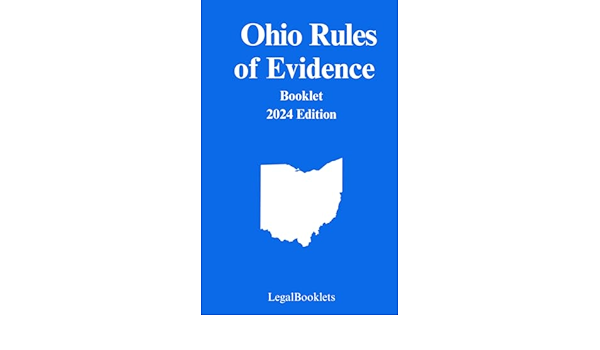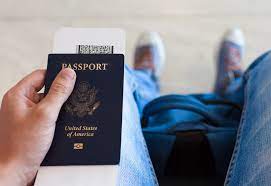The Supreme Court established the Ohio Rule of Evidence through its constitutional rulemaking jurisdiction. See § 5 (8) of Ohio Canst. art. IV. They went into force on July 1st, 1980.
Ohio law is altered in several ways by the Rules of Evidence. The federal rule of evidence serves as a good model for the Ohio rule of evidence.
To know more about the Ohio rule of evidence, its modifications and others, then this article is for you.
The Meaning of Evidence
Any “item or information offered to make the existence of a fact more or less probable” is referred to as evidence in the legal sphere. In the event of a criminal prosecution, it functions as proof of the crime’s commission. It might be evidence of a financial transaction in a civil case.
Direct evidence and circumstantial evidence are the two categories of acceptable evidence.
Personal knowledge is the foundation of direct proof. Direct evidence is when a witness describes in court what they heard, saw, or felt.
The rest is circumstantial evidence. Circumstantial evidence includes physical evidence, DNA, expert testimony, documentary evidence, and video recordings.
Some individuals have the misperception that circumstantial evidence is less reliable than other types of evidence. All evidence is circumstantial, except for direct witness testimony. To prove a causal relationship between acceptable evidence, attorneys conclude.
Among the More Significant Modifications to Criminal Cases Are:
Ohio Rule Of Evidence: Opinion Data:
Character evidence may be proven by opinion evidence under Rules 405(A) and 608(A).
Previously, the law only permitted the use of reputational evidence to establish a person’s character.
Ohio Rule Of Evidence: Voucher Policy:
The Ohio voucher rule, which forbade a party from impeaching its witness, is eliminated by Rule 607. There is a significant exclusion, though. Before a party can impeach its witness with a prior conflicting statement, affirmative injury and surprise are needed.
Prior Convictions.
The kinds of convictions that can be used to impeach someone are restricted by Rule 609(A). Convictions for felonies and misdemeanors are no longer final.
Acceptable
Nonetheless, infractions of ordinances could be acceptable. Moreover, Rule 609(8) normally forbids using convictions that are older than ten years in the impeachment process.
Revitalizing Memory.
Under certain conditions, Rule 612 gives the trial judge the authority to require the presentation of written materials used before trial to refresh a witness’s memory.
Hypothetical Questions.
It is also optional under Rule 705 to use the hypothetical inquiry to gather expert opinion testimony.
Previous Declarations.
Ohio law is altered by Rule 801(D)(1)(a), which allows certain kinds of previously incongruous statements to be allowed for substantive, rather than the goals of impeachment. This exception only applies to previous declarations made under oath, under threat of perjury, and subject to cross-examination at the time of the declaration.
Previous Account.
Preliminary hearing testimony is not covered by the hearsay rule’s prior testimony exception, according to Rule 804(8)(1).
Proclamations Opposing Criminal Interests.
The hearsay exception for comments against penal interests is recognized by Rule 804(8)(3). Statements that purport to clear or implicate an accused person need to be verified.
Rule of Best Evidence.
Duplicates, as that term is defined in Rule 1001, are normally allowed under Rule 1003 under the same conditions as originals.
The Rules of Evidence as they relate to criminal trials are examined in this first in a series of essays.
Ohio Rule Of Evidence: The Federal Rules of Evidence
The Federal Rules of Evidence served as the model for the Ohio Rules of Evidence. As a result, comprehension of the Federal Regulations is required to comprehend the Ohio Rules. The U.S. Supreme Court issued the Federal Rules in November 1972, and Congress received them in February 1973. See F.R.D. (1973) 183, 56. After being constituted in 1965, the federal drafting committee released its first drafts in 1969 and 1971.
Although, the Court had put down thirteen specific rules on the matter; Congress removed all of them and replaced them with a broad clause that preserved the law of privilege. Refer to Fed. R. Ed. 501. Furthermore, there was debate and revision of Rule 609, which controls the use of earlier convictions in the impeachment process. The Congressional Record and the various committee reports also contain the legislative history of these changes.
These papers are excellent sources of information when interpreting both the Federal and Ohio Rules of Evidence.
At the state level, the Federal Rules of Evidence have had a significant influence. Twenty-two jurisdictions have accepted them with various revisions, and six more states are in the process of adopting them. In addition, the 1953 Uniform Rules of Evidence were updated in 1974 by the Commissioners on Uniform State Laws to comply with the Federal Rules.
The Ohio Regulations
The establishment of an advisory committee in 1975 marked the beginning of the preparation of the Ohio Rules of Evidence. Refer to Miller, The Game Plan: Drafting the Ohio Rules of Evidence, 6 Cap. U.L. Rev. 549 (1977); O’Neill, Introduction, Symposium: The Ohio Rules of Evidence, 6 Cap. U.L. Rev. 515 (1977). The Rules were initially issued by the Court in January 1977, after a draft was published in 1976 (see 49 Ohio Bar 929 (1976)).
View Ohio Bar 231 (1977) at 50.
Nonetheless, the General Assembly used its constitutional right to reject the Rules. Several issues led to the disapproval:
(1) That the process of creating evidentiary rules was legislative, as opposed to judicial;
(2) That some rules were substantive, as opposed to procedural, and so outside the Court’s jurisdiction to make rules under Section 5(B), Article IV of the Ohio Constitution;
(3) Also, that the necessity of rules of evidence had not been proven
(4) That some rules, especially those that acknowledged trial courts’ exercise of discretion, were undesirable. Giannelli, The Proposed Ohio Rules of Evidence: The General Assembly, Evidence, and Rulemaking, 29 Case W. Res. L Rev. 16 (1978); Walinski & Abramoff, The Proposed Ohio Rules of Evidence: The Case Against, 28 Case W. Res. L Rev. 344 (1978), are two publications that contain discussions of this dispute.
In 1978, the rules were once again put out and rejected. 51 Ohio Bar 181 (1978) is cited. In 1980, the Court proposed the Rules a third time, following significant modifications. As long as there was no resolution of disapproval, the rules went into force in July 1980.
RULE 101: APPLICABILITY AND SCOPE
The application clause for the Rules of Evidence is found in Rule 101. Rule 101(A) states that, absent a recognized exemption, the Rules of Evidence are applicable in all hearings before court-appointed referees and in all state courts. (B) and (C) of Rule 101 outline the exclusions.
Referees appointed by the court are not frequently used in criminal proceedings. On the other hand, referees designated by the court are often used in juvenile trials. However, the Rules of Evidence might not always be applicable in court-appointed referee proceedings because “[p]roceedings in which other rules prescribed by the Supreme Court govern matters relating to evidence” are exempt from Rule 101(C)(6).
Ohio Rule Of Evidence: Exclusivity
A number of the exemptions to the Rules of Evidence’s applicability listed in Rule 101(C) are applicable in criminal prosecutions.
Grand Jury Proceedings. Grand jury proceedings are also exempt from the Rules of Evidence under Rule 101(C)(2).
The legal basis for the exemption of grand jury proceedings is outlined in the 1965 case of Costello v. United States, 350 US 359. The use of hearsay evidence in grand jury hearings was upheld by the US Supreme Court in that particular instance. “Would run counter to the whole history of the grand jury institution, in which laymen conduct their inquiries unfettered by technical rules,” the Court stated when applying the hearsay rule!d. at 364.
Ohio Rule Of Evidence: Advantage
According to Rule 101(B), the law of privilege is applicable “at all stages of all actions, cases, and proceedings conducted under these rules.” Special treatment is given to privileges because disclosing privileged material would go against the policy justifications that underpin the various norms of privilege. Therefore, the law of privilege remains relevant even in cases where one of the exceptions listed in Rule 101(C) renders the Rules of Evidence invalid.
There is one major issue with Rule 101. The spouse testimonial privilege that applies in criminal proceedings (Rule 601(B)) and the spousal privilege of secret communications (R.C. 2317.02(0) & 2945.42) were separated by the drafters of the Rules of Evidence.
Rule 408: Negotiations and Compromise Offers
Main tabs (a) Not Allowed Uses. Evidence of any of the following cannot be admitted on behalf of any party to establish or refute the veracity or extent of a contested claim, or to undermine it due to a prior contradictory statement or contradiction:
Providing a valuable consideration in an attempt to compromise or provide a promise to compromise, or receiving, promising, or offering to accept a value consideration; and behavior or a declaration made during settlement talks concerning the allegation— except presented in a criminal prosecution or when a public official was negotiating in connection with a claim while using its regulatory, investigative, or enforcement powers.
(b) An exception. For other purposes, such as establishing a witness’s bias or prejudice, refuting a claim of undue delay, or demonstrating an attempt to impede a criminal inquiry or prosecution, the court may accept this evidence.
FAQs
What Does Ohio’s 613 Rule of Evidence Say?
When questioning a witness on a previous statement they made—written or not—it is not necessary to show the statement or reveal its contents to the witness at that moment; however, opposing counsel may request that the statement be shown or revealed.
Which Ohio Evidence Rule Is the Best?
According to Ohio Rule of Evidence 1002, unless otherwise specified in these rules or by a statute passed by the General Assembly that is not in conflict with an Ohio Supreme Court rule, the original writing, recording, or photograph is necessary to prove the content of such an item.
What Is Rule of Evidence 16 in Ohio?
The purpose of this rule is to safeguard the rights of defendants and the integrity of the legal system, as well as the welfare of witnesses, victims, and society at large. It also aims to give all parties involved in a criminal case the information required for a thorough and impartial determination of the facts.
Conclusion
Subject to the restrictions listed in the rules, the Ohio Rules of Evidence also apply to proceedings in Ohioan courts. The privilege rule is applicable throughout all phases of all lawsuits, processes, and actions that are managed under the standards of evidence.
Also, Read



